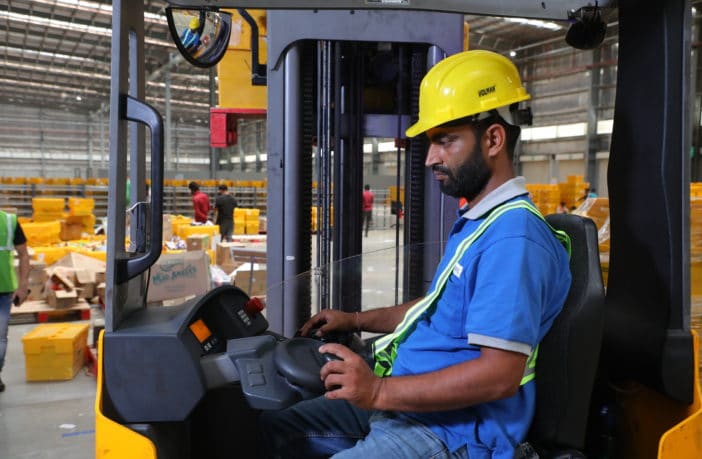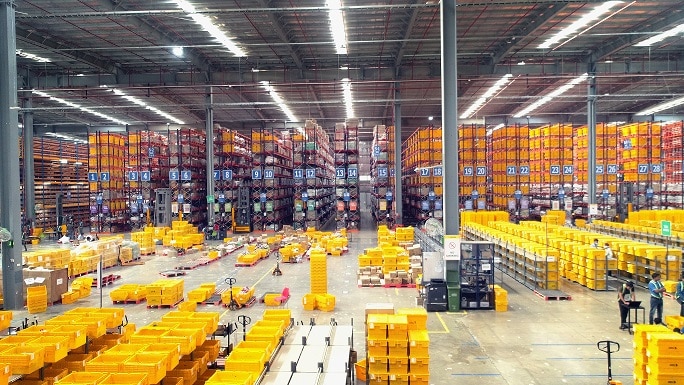Rural India now calling for grade A warehouses
The on-set of Covid-19 brought about widespread fear and anxiety among the people leaving a direct impact on the economy. A survey conducted by Mckinsey & Co on consumer…
On July 20, 2021

The on-set of Covid-19 brought about widespread fear and anxiety among the people leaving a direct impact on the economy. A survey conducted by Mckinsey & Co on consumer…
On July 20, 2021
The on-set of Covid-19 brought about widespread fear and anxiety among the people leaving a direct impact on the economy. A survey conducted by Mckinsey & Co on consumer sentiment and behaviour reflected that 94% Indians changed their behaviour during this time. Consumers now prefer online shopping mediums vs. crowded brick and mortar stores. Multiple domestic brands saw an exponential rise in their e-commerce sales. Consumers in Tier 2 and 3 cities, too, became regular online shoppers demanding same day/next day deliveries. This change in consumer behaviour is going to be permanent. India has 504 Mn active internet users, of which 50% (227 Mn) are based in rural areas. (Source: Internet & Mobile Association of India – IAMAI) The digital gap that has existed between urban and rural areas is now closing in. There has been a substantial increase in the smartphone user base too. According to TechARC, over 500 million Indians are using their phones regularly and 77% of them are accessing wireless broadband through smartphones regularly. These statistics envisage consumer behaviour patterns on how they process information and its impact on the supply chain. To fulfil these consumer demands, warehousing plays an integral role in storage and transportation of goods. India currently has 238 Mn sq. ft. of total warehousing space and 28 Mn was added in 2020. (Source: JLL India). Surge in demand across retail, e-commerce across industries has seen the warehouse industry re-shaping itself. This trend will certainly continue in the next few years.

Firstly, most of the modern warehousing capacity has been clustered around metro cities. Primary reason behind it is quick access to superior technology and organised retail. However, there is a noticeable shift from the top 8 metro cities. In fact, investors are taking cognizance of smaller cities as ideal locations to expand warehousing networks. This is therefore a golden opportunity for companies realigning their supply chain approach to reduce delivery time.
Retail, FMCG and e-commerce companies are looking at logistic service providers who offer value added services and automation. Demand for more robust supply chains has catapulted Tier 2 and 3 cities to offer good warehousing options as well. For example, mall cities like Coimbatore, Ambala, Siliguri, Visakhapatnam, Kochi, Indore, Jaipur, Vijayawada, Nagpur, Guwahati are projected to emerge as warehouse clusters. FM Logistic is setting up its own warehouses around major hubs like Mumbai, Delhi NCR, Bengaluru, Hyderabad, Chennai etc, connected to key industrial corridors.
Secondly, Grade A warehouses in metros are built to international standards of safety and compliance. MSMEs as well are exploring facilities that are efficient and cost effective, while maintaining a certain operating standard. Most Grade A warehouses offer Multi-Client Facilities (MCF) to suit their customer’s requirements.
There is a lack of standard warehousing facilities in small cities for companies to store their goods. As growth penetrates further into Tier 3 cities, Indian and international companies are demanding Grade A warehouse infrastructure. However, it may take a while for these facilities to become available in abundance. In such scenarios, Built-to-Suit (BTS) warehouses catering to these requirements at a regional level can be a viable choice. They equip companies with standardised technology and storage options to fulfil customer requirements. These options enable small companies to operate productively, efficiently and even innovate to keep up with their competitors.
As more consumers demand faster deliveries, small distribution hubs will double up as well as in-city warehouses as a solution. These warehouses will serve as necessary nodal points in the supply chain. This will allow businesses to cater to a larger market while increasing employment opportunities.
Finally, with the various initiatives taken by the Indian government, the warehousing and logistics sector is now steadily marching towards growth. Granting infrastructure status to the logistics industry along with GST, National Logistics Policy have created a favourable regulatory ecosystem.
Companies are realigning the sourcing and manufacturing footprints to ensure consistency in meeting consumer demand. As manufacturing setups increase in rural parts of the country, Tier 2 and 3 cities will see emergence of warehouse clusters. This will blend perfectly with the industrial and freight corridor. Presence in more locations for manufacturing and warehousing gives them the flexibility to create value chains. In short, these value chains can ensure higher productivity, optimized operations and a seamless supply chain network that will work like clockwork.
To learn more about warehousing in India, and more specifically about Grade A warehouses, check our articles “Grade A Warehousing: The Preferred Choice?” and “Grade A Warehousing – A Boon for Modern Supply Chains in India?” !
How can we help you ?
Fill in the form